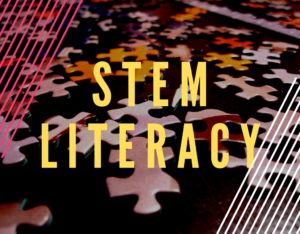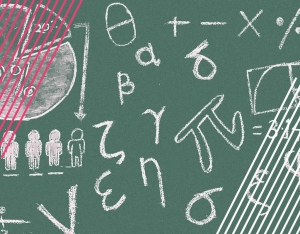As more reasons explaining the importance of STEM become increasingly popular, we may at some point ask when to start STEM education.
When I first became a librarian, I inherited a STEM program for tweens which had me teach them how to use STEM kits. As the program went on, showing how to use kits like Littlebits, Ozobots, and Snap Circuits, I noticed that many students were OK creating something with instructions but became frustrated when trying to create something original on their own using these kits. They simply did not understand the concepts behind these kits. If they were taught these concepts at an earlier age, I am sure they would have had no problem creating something on their own. With that, I decided to do some research on what the optimal age would be to start STEM education.
When should STEM education start? Research has shown that early childhood, birth to age 5, is the critical point in brain development. Therefore, to ensure a child will be ready to join an increasingly needed STEM workforce in their adult years, STEM education should begin during early childhood.
Many people may not have an interest in starting a career in STEM or they may think they’re too old to start, so even starting a STEM education is not considered. There are several reasons why this could be a bad mistake.
Table of Contents
It Starts With Early Childhood Brain Development
The National Science Teachers Association did a study showing that young children learn through active exploration and the drive to interact, explore, observe, and discover is built in their development. The education community believes that STEM curricula should begin during these early childhood years to set them on a path to develop a love of scientific inquiry.
Scientists have estimated that infants and toddlers develop 1 million neural connections every second. This makes early childhood an optimal time to introduce children to studying the natural world.
This sensitive development period must be used to start children on the right path to be successful in STEM. Once these neurological pathways are developed, a pruning process occurs where synapses that are not used are eliminated.
Along with developing an interest and understanding base for STEM and increased questioning skills, science instruction enhances abilities in subjects beyond STEM, including attention, language-learning, and literacy.
The Foundations For A STEM Education
If you’re going to build a strong, tall building, you wouldn’t start the foundation on the 6th floor. Education works the same way. Having a good early foundation supports success later on. In other words, starting STEM education at early childhood is more beneficial than starting STEM education at 6 years old. Students in their first three years are highly active learners. Their STEM foundations can start building right when they are born.
Research shows that the best way to teach early childhood education is to ignore instruction that is passive and do more investigation and play. This type of learning during early childhood builds interests and skills that aid children throughout their life. According to STEM in the Early Years by Lilian G. Katz, allowing students to be engaged, active, and to take initiative in their learning is best practice for the early years. Research shows that allowing opportunities to take initiative in learning early is not only good for learning STEM but long-term academic success overall.
Unfortunately, in most schools, children are in a receptive mode instead of a more active mode. Early childhood education should use the natural curiosity of children and provide them with enough ways to be active in their learning. Unlimited opportunities are found in natural settings for children to investigate and explore. This helps STEM skills to build and create a foundation solid enough for future learning.
Teaching STEM Through the Environment
STEM is more than just an acronym that stands for science, technology, engineering, and math. STEM should integrate knowledge across these disciplines, encouraging students to think more in a way they are connected.
Success in learning requires the learner to experience and investigate an idea in a variety of settings. For example, in addition to math worksheets to help practice counting, students can be taken outside to practice counting objects they find in real life, such as pebbles, trees, or leaves. Their learning is strengthened when they learn the same skills, ideas, and concepts in different contexts. This is what educators call cross-contextual learning. This experience-based learning makes connections across disciplines. Children need opportunities to learn the same material in different settings and through different lenses. The traditional isolated-teaching approach does not support the ways that children learn best.
A recent survey found that science is the subject that early childhood educators have the least confidence in teaching science. Another survey found that most U.S. schools have students spend their outdoor playtime in developed or maintained play areas compared to using natural spaces.
For our nation’s children to succeed later in life, we need to change this. Leading thinkers in education believe that a foundation of STEM education is needed for a vibrant democracy. We need to encourage the best practices in STEM education from the start. Making learning relevant is one of those best practices. Nothing can be more relevant than exploring the world outside.
The Need For A STEM Workforce
Research indicates that exposing students to STEM early helps them stay with STEM learning even as the material becomes harder in high school and college.
U.S. STEM workers with 1 to 2 years of experience say that STEM concepts were exposed to them highest during elementary school. 46 percent of this group science or math-related experience in school and 53 percent of this group are working in a job that involves STEM heavily.
There has been a lot of research predicting that in the next few years, the U.S. will not have enough STEM-skilled workers to fill STEM jobs. Adding to this is the fact that many future STEM jobs don’t exist yet. The Department of Labor estimates that of today’s students, 65% will land these types of jobs. Students will need a collection of STEM skills to take on those positions.
According to results from the fourth annual STEM survey by Emerson, two out of 5 Americans believe the STEM worker shortage is at crisis levels.
According to the National Science Board in 2018, the competitiveness of our nation depends on building a STEM-capable workforce. STEM skills and knowledge is essential for U.S. businesses to compete in the today’s world, and to have better jobs and increased prosperity in every part of the country. In order to be competitive, big and small businesses across the country need workers that are adaptable and STEM-capable at every education level and from all demographic groups.
An innovative and well-prepared STEM workforce is critical to the U.S.’s security and prosperity. A key sector of this workforce is future generations of STEM professionals. To accelerate progress, the next generation of STEM professionals will need to master new knowledge and skills.
Why starting STEM Education Is Important For Adults
With the change in teaching children STEM topics, the learning approach that many adults have experienced with these topics has changed. This has caused many adults to feel like they have less knowledge of science, technology, engineering, and math topics as they may want to have.
Increasing STEM skills can benefit adults in several ways:
- It will give them the tools necessary to better mentor children on the topics.
- Health is benefited by reducing cognitive decline by keeping an active mind.
- It can also be an important safety precaution for the advancements of smart robots taking over blue-collar jobs and the increasing number of jobs requiring a form of STEM-skills.
Despite the benefits, a number of adults may discover learning STEM topics in later years to be discouraging. But, it can be just like learning it as a kid if done correctly. Because the brain has already finished developing, the adult brain has a different way of learning. Unlike how early childhood learning creates new brain pathways, this other neurological process demands connections to be made.
When approaching it correctly, adults can learn new STEM concepts just as effectively as adolescents can. Especially these days, it is never too late to enhance knowledge on something so important in today’s society like STEM.



